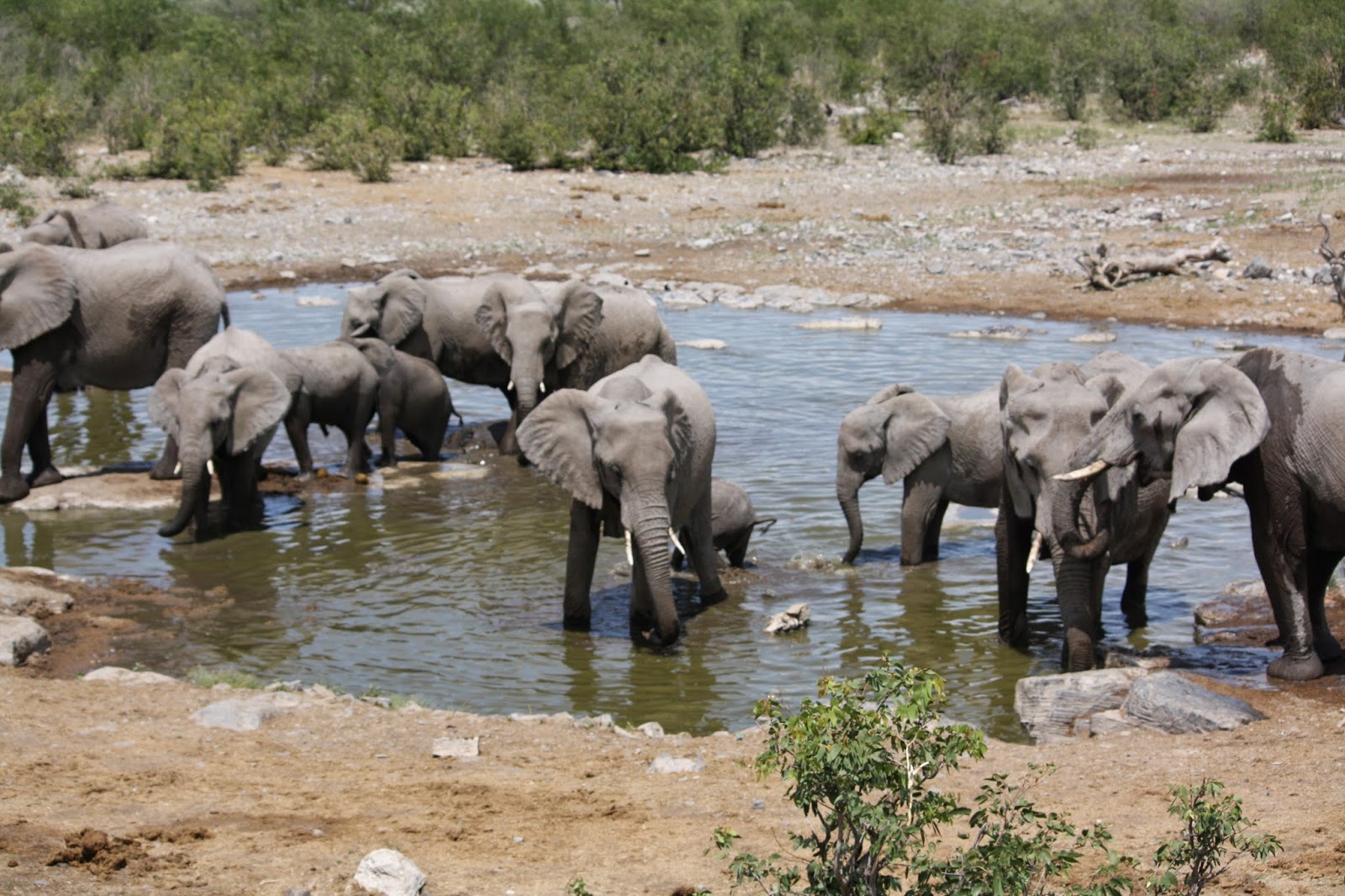 |
| The Etosha salt pan is made up of millions (probably billions?) of these little clay polygons. |
The name Etosha means “Great White Place,” and although the
entire park is not one huge salt pan, the main point of interest in the park is
the Etosha salt pan, which measures slightly over 30 miles across by nearly 80
miles wide. When the park was originally
established in 1907 its area covered over 34,000 square miles from the Skeleton
Coast to its current location, but after many size adjustments the park was
reduced to its much smaller, current size; which is still seven times the size
of Rhode Island.
My friends and I traveled to Etosha for one reason: the
wildlife. In particular we wanted to see
cheetahs and desert elephants, and although the cheetahs eluded us over the
four days we were in the park we were able to see plenty of elephants.
 |
| Some of the 16 elephants that we saw at the watering hole in Halali. |
The elephants of Etosha are a wondrous bunch. These elephants belong to a special group of
elephants found only in Northern Namibia and Southern Angola. The elephants are taller than their
counterparts from other parks, yet lack the large tusks that distinguish the
elephants of Southern Africa and Eastern Africa due to a deficiency of minerals
in their diets – causing smaller, shorter tusks.
 |
| A mineral deficiency (probably calcium) causes the elephants of Etosha to have smaller husks, although the elephants are the tallest in all of Africa. |
Living in Etosha’s arid environment comes with other
challenges aside from a lack of particular minerals. Namely water is the limiting resource for
these large consumers and because of this their numbers hover between two to
three thousand in total for the park, whereas Chobe National Park (a park of similar size) just some few
hundred miles away has an estimated 50,000 to 80,000 elephants.
Luckily, the lack of water sources lends itself to
increasing the numbers of elephant sightings due to the fact that elephants
must drink water nearly everyday, so to see them a person only needs to go to a
watering hole and wait. Patience will
bring the elephants. During my time in
Etosha we saw over 40 elephants, but at a waterhole in Halali we saw 16 at
once.
 |
| In Etosha National Park, water is the most limiting factor in why such a large park only has two to three thousand elephants, where as Chobe National Park in Botswana has at least 50,000. |
I’ve seen plenty of elephants during my time in Zambia,
Botswana, Kenya, South Africa, and Tanzania but I would have to say that the
elephants of Namibia’s Etosha National Park were my favorite. It can’t be an easy task to scratch out a
living in a park that’s known for 2,400 square mile salt pan and allows nothing to grow.
Overall, I would go so far as to say that Etosha as a park
ranks second on my list of parks that I’ve been fortunate enough to visit (it
would be second only to Kenya’s Maasai Mara Nature Reserve). And to have the opportunity to stand in the
middle of a “Great White Place” where the air is as dry as anything you could
imagine, while having lunch with friends, is a memory I won’t likely forget
anytime soon.
 |
| In the middle of Etosha Pan. From the left: Jacob, Team, Caleb, myself. |


No comments:
Post a Comment